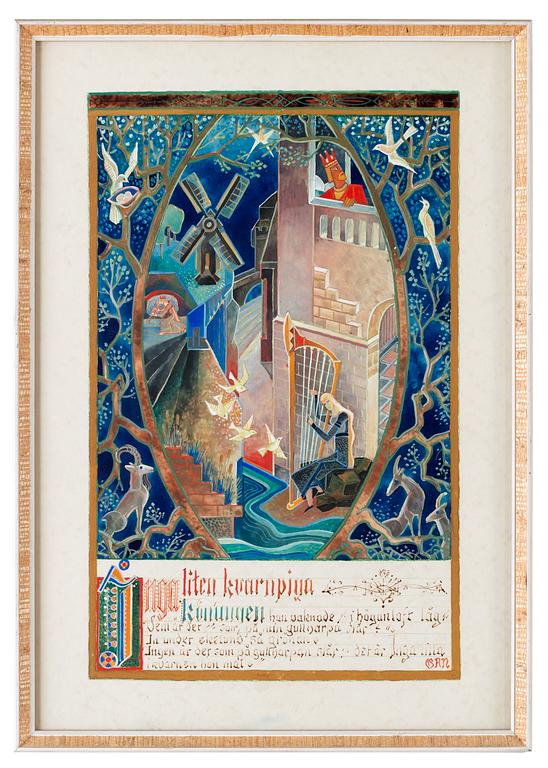Gösta Adrian-Nilsson
"Svenska folkvisor" (Swedish folk songs)
Signed GAN. Executed in 1924-25. Gouache, colour pencil, indian ink, ink and pencil on paper, 38.5 x 24.5 cm each.
Provenance
Acquired at Liljevalchs Konsthall, Stockholm, 1958, during the exhibition "GAN. Gösta Adrian-Nilsson. Retrospektivt".
Exhibitions
Liljevalchs konsthall, Stockholm, "GAN. Gösta Adrian-Nilsson. Retrospektivt", 29 March - 27 April 1958, cat no 358-362.
More information
Original portfolio marked Carl Weiner Halmstad (currently Weinerska Bokbinderiet AB) included.
Designer
Gösta Adrian-Nilsson is most notable as a visual artist, and he is a pioneer of Swedish modernism. He studied at the Tekniske Selskabs Skole in Copenhagen and later for Johan Rohde at Zahrtmann’s school in Copenhagen. As an avant-gardist, Nilsson was constantly searching for new influences. In Berlin, he was influenced by the circle around the radical magazine Der Sturm, through Kandinsky and och Franz Marc. In Paris through Fernand Legér and the artists in his circle. GAN was an eclectic in the positive sense of the word. He took the the artist styles of the 1900s and created new impressions. Symbolism, cubism, futurism, expressionism, constructivim and Theosophy were the colours occupying his internal pallet. He had a sharp eye for the masculine and his painting was often energized by the vitality of modern technology, vibrant eroticism, and echoes of tyrants. No other Swedish modern artist exhibits such a unique style.
Read more






















































